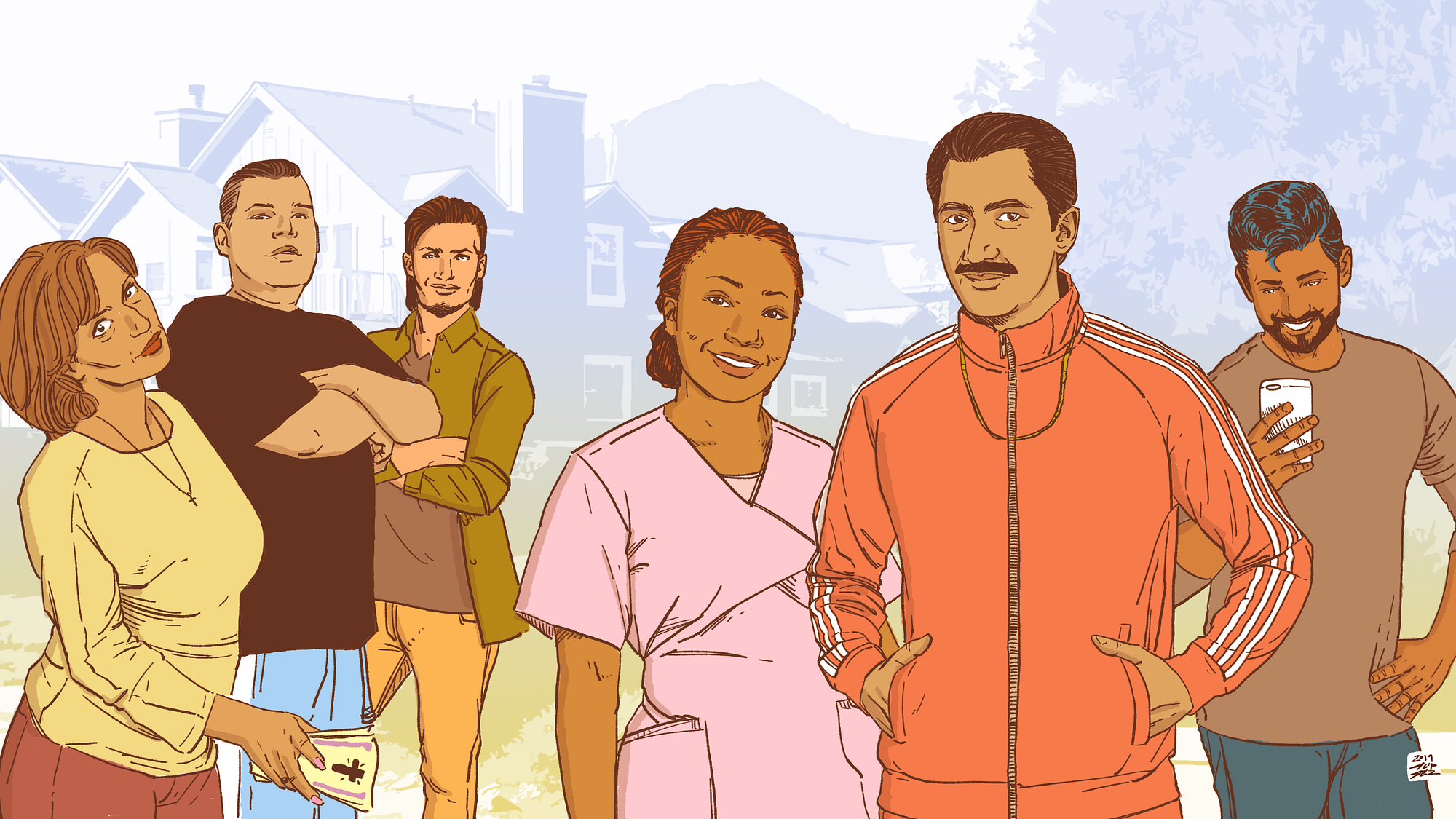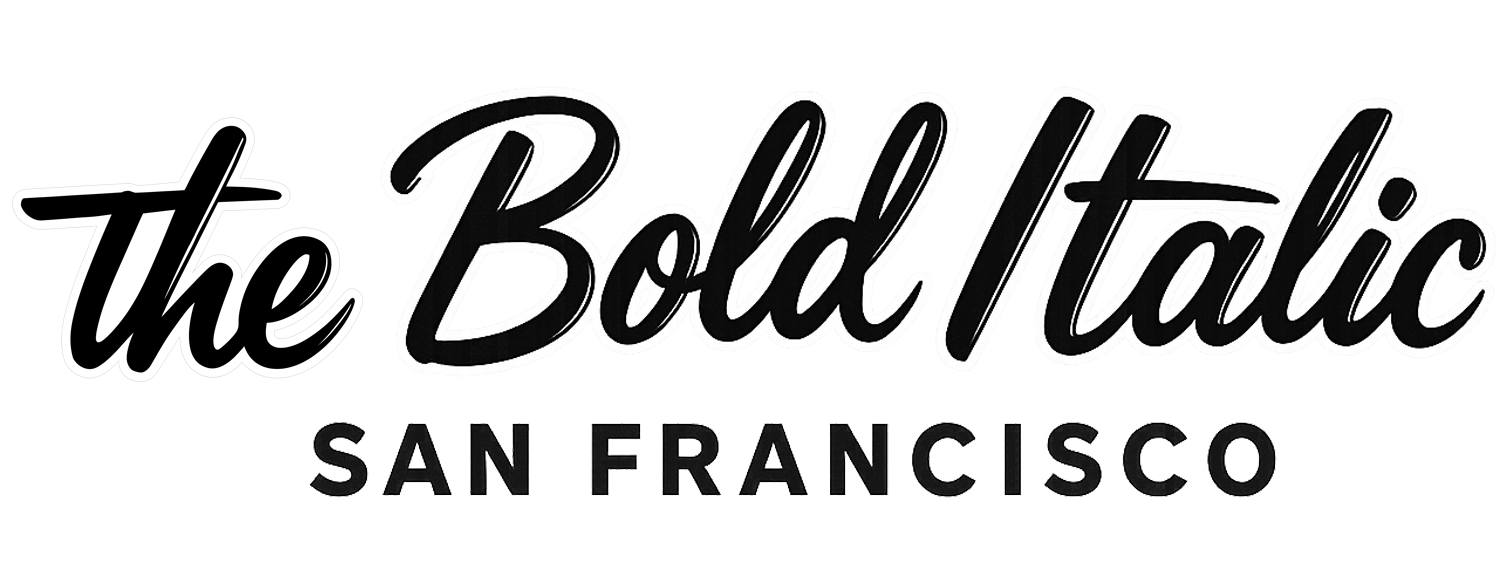
Ali, decked out in a striped gym suit with gold chains as though he’s from Jersey, knocks on my front door every few weeks to offer my family food. He’s from Iran and knows how much I love Persian cooking, since I grew up with my Iranian stepfamily. A self-made taxi driver with his own taxi business, he shares more than food, such as stories about the Gulf War and his PTSD.
I wonder if he hears my meltdowns through the walls. I have sensory processing challenges, and despite being able to focus on writing this essay and holding degrees and credentials, my brain gets overloaded every couple of months. When this happens, I have migraines — or screaming fits.
I arrived in my new neighborhood near Novato after trial and error. After two years on the East Coast for graduate school and then six years spent working abroad, I had always felt like an outsider. I decided to return home to the Bay Area, where I felt embraced. Where I belonged. I considered moving back to my hometown of San Francisco since I had held on to the idea of the city’s diversity all those years. But after a short stint in Berkeley, even in the more mellow East Bay, my sensory sensitivities became unbearable. I had to run even farther from the city to the quiet of the suburbs.
“Diverse suburbs are growing faster than predominantly white suburbs.”
As a San Francisco native, I never would have guessed that I’d find my community way out in the North Bay. But the ’burbs felt so much more like home, like the San Francisco of my youth. Having grown up between the Haight, the Fillmore, and the Sunset, and being a product of San Francisco public schools — living among cultural, economic, and ethnic diversity — I’ve always felt that immersion in difference is my norm.
In her book Radical Suburbs, Amanda Kolson Hurley talks about the origin and future of the American suburb. The stereotype of “white suburbs” is shifting. My neighbors are Guatemalan, Iranian, and African American. My husband is South Asian; our daughter is mixed; and I’m a Caucasian mix of Brooklyn Jew and Missouri Christian.
“Diverse suburbs are growing faster than predominantly white suburbs,” Hurley writes in her book. “Young professionals might tell you that they could never live in a suburban ‘bubble’ or complain that the suburbs are ‘too white’ — despite those suburbs having become more diverse, racially and socioeconomically, than their own city neighborhoods.”
Before I realized the potential of suburban micro-communities, I considered cohousing. I got the idea from my friend Courtney Martin, an Oakland author who wrote about her cohousing community in The New Better Off. Then my sister and her family moved into an Oakland cohousing community. But I had a feeling that my mental health would be more difficult to manage with respect to strict cooking or cleaning schedules.
There are few cohousing communities around the Bay Area. But then it occurred to me that the same type of suburban compound I had newly arrived in — with communal pools, community rooms, and literal wall-sharing — might offer the closeness that so many of us seek. Could this be our solution to pervasive loneliness? As a departure from past narratives, could suburbs be bubbles of belonging rather than alienation and segregation?
“I’ve certainly developed an attachment to my community,” Hurley told me. And while suburbs may not have the aesthetic lure of big cities, she thinks that “place-based attachments can arise despite whatever a place looks like.” I agree.
I was raised in a Baha’i community where homeless women and men would come to gatherings alongside wealthy doctors, immigrants, and activists directly underneath a freeway overpass in the Mission District. We were connected to one another and to our retro building of worship on Valencia Street.
“My brain literally hurts,” my father would tell me, “if we’re not talking about something deep.” He was referring to the superficiality that dominates American life. At times, sitting across from him in his den, I would find our conversations overwhelming because I was too young to understand, and he craved connection that other adults should have been able to provide him. He was surrounded by books, antiques from the Middle East, calligraphy pens, and his many volumes of poetry. His wife (my stepmother) was a secular Muslim from Iran. He was a New York Jew who had converted to the Baha’i Faith in the 1970s. He barely recovered from the sterility of the 1950s, constantly writing and seeking out people, ideas, and conversation to fill the void.
I visited them once a month while growing up. I was five years old when my parents divorced. In 1989, my mom moved all four of us kids from LA to San Francisco, where we found connection, curiosity, and acceptance amid other new arrivals — in our case, a majority-minority school of first-generation immigrants at Lawton Elementary.
My sister and I took the 22 Fillmore and the N Judah to our public school every day, starting in our predominantly black neighborhood of the Fillmore and arriving in the predominantly Asian American neighborhood of the Sunset. Every day we learned lessons in patience, flexibility, grit, and perseverance. If the Muni bus broke down, which it often did, I would write an explanation letter to our principal and have the bus driver sign it so that we weren’t penalized for tardiness. When odd characters attempted to sit near us, our school secretary, who often rode our bus, forced herself out of her seat and across the aisle to guard us.
At home, my downstairs neighbor was a black circus artist, and the woman in the back in-law unit was a hairdresser. Later it was a gay couple and their dog. Our upstairs neighbors were Swiss ceramicists. Because I was immersed in neighborhood diversity while growing up, I was elated when browsing Netflix recently to find the new Tales of The City, a show based on the books of the same name about a cast of San Francisco characters and the home they share. And, of course, Always Be My Maybe, a romantic comedy starring San Francisco’s own Ali Wong and Randall Park, two leading Asian American actors. Both shows are wonderful, but it was The Last Black Man in San Francisco that gripped me in a sobbing revelry of childhood, longing, and belonging.
I’m not black, Asian, or a skater, but these groups feel like a literal part of my being. I shared my everyday youth with people whose customs, experiences, and emotions became my own. We weren’t separated by appearance; we were tossed around in the same bag by parents trying their best.
And as for the other kids who went to school with us? Almost all of them are also in interracial marriages. Almost all of them are involved in the arts, like I am. Many of them traveled the world, like I have. And all of them returned home, like I did.
On a recent lunch date back in the Haight with my childhood best friend, I ran into an old neighbor, George, on the front stoop of his house. We chatted about Danny Glover, who lived a few blocks away, and The Last Black Man in San Francisco. George bought his house in 1969, just a block from where the Grateful Dead and their groupies camped out. George and I shared stories about the old neighbors on the block. He is one of the last remaining black men on our old street. “The city’s changed,” he tells me. “People are miserable.”
I tell George about where I live now. He seems reassured that such places still exist—and in such unexpected places. And I explain, just as Jimmie Fails did in his KQED interview, that it’s the “gentleness” that we’re simultaneously mourning and running toward. We may still find it in pockets of the city, but it’s everywhere in the Bay Area, even in tiny suburban compounds.
The San Francisco I miss is a place where the freedom to be is the norm.
On my way home through Golden Gate Park, I stop to watch the old buffalo. I’m reminded that they are the original natives. Their sheer mass, contrasted against the tall grass, is a reminder of our resilience against the changing tides of San Francisco. And the endurance of our accepting values across the Bay Area.
And in the heat of a suburban summer, I’m enjoying watching my seven-year-old swim in the pool, vanilla ice cream on tap, my body sinking into a childlike state of play. Each night in my dreams, I’m greeted by the vivid characters of my youth; the artists and musicians I spent every day with at San Francisco’s School of the Arts (SOTA), the painters in the courtyards, and the dancers in our school hallways. I’ve missed them.
Seeing George transported me back to my childhood, to the feeling of the freedom to be. The San Francisco I miss is a place where the freedom to be is the norm. Sure, I miss the iconic architecture of witch-hat houses, rolling hills, Ocean Beach, and Golden Gate Park. But I also miss the no-questions-asked attitude and the comfort of seeing a dreadlock’d hippie on the bus next to a beatboxer, across from a Chinese American grandmother. I miss cognitive liberty, authentic friendship, dancers being able to afford to live in the city, and school teachers who rode the bus with us versus ferrying in from afar.
Back to Ali, my current neighbor. His wife, Janet, is a nurse practitioner from Sacramento who grew up on a farm. Her father helped build Bay Area overpasses and bridges. She’s black, drives two Mercedes, and her sister visits regularly. Janet tells me about the antidepressants her dog is on and about our neighbor, whom she had to call the cops on due to a drug overdose.
On the other side of my short fence is Valeria, a middle-aged homemaker from Guatemala; her husband the contractor; and their two grown sons. Once a month her nieces and nephews descend upon their house in dresses and suits. We can all hear their deep, melodious religious chants until late into the night. She leaves Christian literature in our communal laundry room “just in case” but doesn’t push it.
My neighbors make me feel at home. The teachers, nurses, immigrants, social workers, activists, and writers — there is magic happening here.







